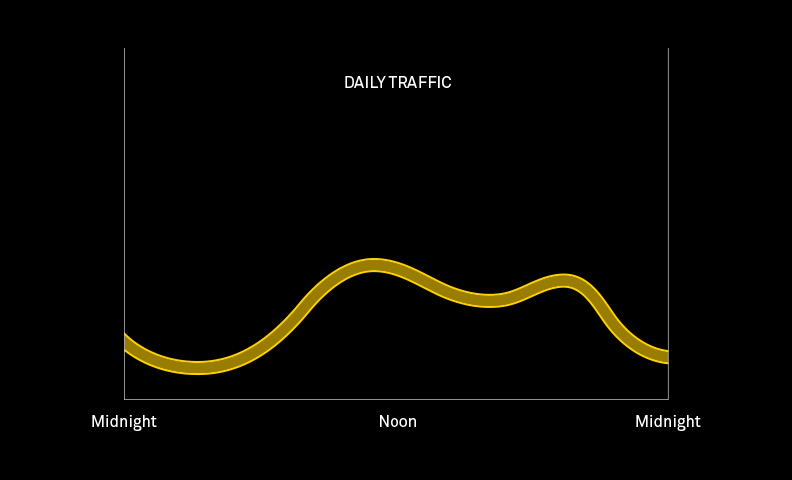
by Tom Shields, Chief Strategy Officer, AppNexus and Co-Founder, Yieldex
Ever since the invention of the ad server in 1995, publishers have been working to optimize yield. At first, that meant selling as many impressions as possible. Soon, more sophisticated targeting meant that yield optimization and pricing became important skills. Then, with the introduction of real-time bidding (RTB,) the problem of allocation grew even more complex. But across the decades the objective has remained constant: fulfill commitments to buyers while maximizing revenue.
Back in the early days of digital advertising, technologists struggled to solve one of the most difficult tasks in yield management: forecasting delivery to fulfill guarantees to buyers. Overlapping segments, buys of different sizes for different time periods, and fluctuating traffic all made forecasting horribly inaccurate. It was over a decade later when my Yieldex co-founder Doug Cosman patented a combination of clever algorithms to enable dramatically more accurate forecasting.
To meet these challenges, a focus on yield optimization for publishers proved key. Accurate forecasting helps drive yield both before the sale (by informing sales of availability), and after the sale (by informing the ad server of the most efficient way to deliver). Offering availability lookups for sales and delivery control for ad servers addressed both.

As the technology developed, it turned out that our new systems had another incredible advantage over those that weren’t forecast-aware: the ability to do a much better job allowing RTB to compete with guaranteed inventory. For example: typical ad servers serve guaranteed flights evenly throughout the day, meaning they try to deliver the same number of impressions during the 3 AM hour as the 3 PM hour. If RTB demand is roughly flat throughout the day as well, then at 3 AM (when there are fewer visitors) there will be a lot more contention than at 3 PM (when impressions are higher). A forecast-aware system would deliver more guaranteed impressions during high-traffic periods, capture more RTB demand during lower-traffic times, and deliver higher overall RTB revenue. We quickly patented this idea as well.
The year 2008, however, presented a challenge: ad servers of the time simply didn’t have the ability to become forecast-aware—the APIs did not exist. Short of writing our own ad server, we didn’t know how to deliver on our promise of automated yield management, so we pivoted toward providing tools for ad operations, yield managers, and sales, enabling yield optimization through control of avails, pricing, and prioritization.
By 2015, the potential to realize our original vision arose through an acquisition—marrying our accurate forecasting with AppNexus’ state-of-the-art ad server to deliver higher yield. Beginning with basic avails integration, we steadily gained confidence and integrated progressively deeper.
This year saw the emergence of a never-before-seen direct integration between the forecasting and delivery systems, which Schibsted Media Group helped develop and test. Leveraging what we’ve titled our Forecast-Shaped Pacing algorithm enables Schibsted’s direct campaigns to more evenly distribute budgets throughout the day, which in turn opens up more inventory to programmatic demand during peak hours. Schibsted has seen revenue increases since employment, and this algorithm has since been rolled out across the platform. Schibsted was invaluable in helping us look at the real-world outcomes and validating the efficiency increases and is actively working with us on the next generation pacing algorithm.
Lo and behold, just as predicted possible nearly a decade prior, programmatic revenue substantially increases as a result of the forecast-shaped pacing. And a much larger percentage of guaranteed orders delivered evenly all the way to the end of the flight, without manual intervention.
The production of Forecast-Shaped Pacing is the culmination of over ten years of work to deliver a key advancement in delivery optimization. Whether you call it artificial intelligence or just algorithmic optimization, our platform is taking over more of the complex repetitive work of yield optimization, freeing publishers’ time up for more strategic thinking.
More from Digiday

Camila Cabello es la nueva imagen de BACARDí, la estrategia de marketing de la marca es una explosión del Caribe
Suscríbete al newsletter de Digiday en Español aquí para recibir las últimas noticias sobre el sector de marcas y la industria del marketing. La cantante cubana Camila Cabello compartió con sus más de 65 millones de seguidores en Instagram el video del comercial de su nueva asociación con BACARDí, en el clip de 30 segundos […]

Why some publishers aren’t ready to monetize generative AI chatbots with ads yet
Monetization of generative AI chatbot experiences is slow going. Some publishing execs said they’re not ready to add advertising to these products until they scale or can build a subscription model first.

Ahead of Euro 2024 soccer tournament, brands look beyond TV to stretch their budgets
Media experts share which channels marketers are prioritizing at this summer’s Euro 2024 soccer tournament and the Olympic Games.





